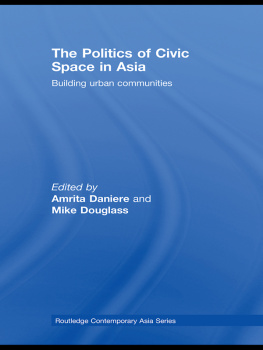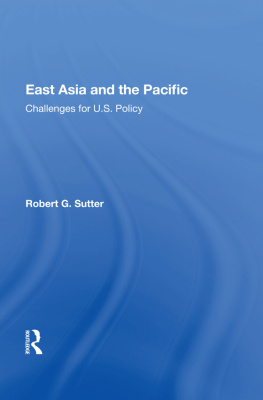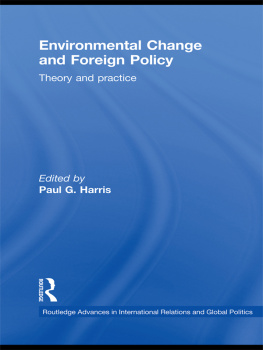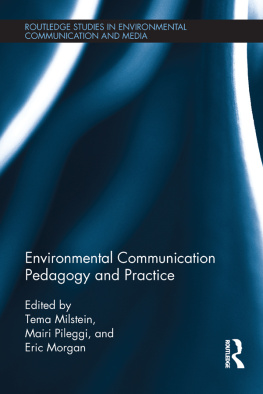RETHINKING ENVIRONMENTAL MANAGEMENT IN THE PACIFIC RIM
Rethinking Environmental Management in the Pacific Rim
Exploring local participation in Bangkok, Thailand
AMRITA DANIERE
University of Toronto, Ontario, Canada
LOIS M. TAKAHASHI
University of California at Los Angeles, USA
First published 2002 by Ashgate Publishing
Reissued 2018 by Routledge
2 Park Square, Milton Park, Abingdon, Oxon OX14 4RN
711 Third Avenue, New York, NY 10017, USA
Routledge is an imprint of the Taylor & Francis Group, an informa business
Copyright Amrita Daniere and Lois M. Takahashi 2002
All rights reserved. No part of this book may be reprinted or reproduced or utilised in any form or by any electronic, mechanical, or other means, now known or hereafter invented, including photocopying and recording, or in any information storage or retrieval system, without permission in writing from the publishers.
Notice:
Product or corporate names may be trademarks or registered trademarks, and are used only for identification and explanation without intent to infringe.
Publishers Note
The publisher has gone to great lengths to ensure the quality of this reprint but points out that some imperfections in the original copies may be apparent.
Disclaimer
The publisher has made every effort to trace copyright holders and welcomes correspondence from those they have been unable to contact.
Typeset by Martingraphix, Cape Town, South Africa
A Library of Congress record exists under LC control number: 2001099671
ISBN 13: 978-1-138-73344-2 (hbk)
ISBN 13: 978-1-315-18711-2 (ebk)
Contents
The authors are grateful to Professors Orathai Ard-Am and Anuchat Poungsomlee of the Institute for Population and Social Research, Mahidol University, Nakom Pathom, Thailand for their generous advice and assistance with collecting information regarding environmental issues in Thailand. In addition, we wish to thank many individuals at the Thailand Development Research Institute Foundation in Bangkok without whom our initial knowledge about Thailand, and Bangkok in particular, could not have been gained. These include Chalongphop Sussangkam, Sauwalak Kittiprapas, Mingsam Kaosa-ard, Somthawin Patanavich, Banasopit Mekvichai and Suganya Hutaserani. Amrita Daniere sincerely appreciates their outstanding and entertaining efforts to educate a naive researcher from the United States.
In addition, we thank the following graduate students for their untiring efforts to help this book reach completion. They include Nadia Abu-Zahra, Helen Collins, Molly Davidson-Welling, John Iveson, Yael Levitte and Kate Swanson, all at the University of Toronto and Stacy Harwood who, at the time, was a student at the University of California, Irvine.
We also thank Theo Panayotou and John Montgomery at Harvard University, Sora Park Tanjasiri at the University of California Irvine, Randall Crane at UCLA and Charly Mehl in Bangkok, Thailand for their wisdom and support throughout the course of this project.
A number of institutions have provided financial support for our research including the Pacific Basin Research Center of Soka University, the University of Californias Pacific Rim Research Program, the Social Science and Humanities Research Council of Canada and the Department of Geography at Middlebury College which provided a productive and beautiful sabbatical home for one of the authors. The authors also thank the Department of Geography at the University of Toronto, the Department of Urban Planning at UCLA, and the Department of Urban and Regional Planning at UC Irvine for their support at various points of the project.
Finally, we also thank the following publishers for permission to use slightly modified versions of previously published material: Edward Elgar Publications for material published in Social Capital and Well-being in Developing Economies, edited by Jonathan Isham, Sunder Ramaswamy and Thomas Kelly (2002); University of Chicago Press for material published in Economic Development and Cultural Change; Pion for material published in Environment and Planning C; Elsevier Science for material published in Habitat International and Kluwer Academic Publishers for Policy Sciences.
At the beginning of the twenty-first century, it is impossible to find an urban enclave or metropolitan region that does not have grave concerns about the quality of its surrounding environment. Many believe that the degradation of urban environments is most devastating and overwhelming in rapidly growing urban areas of developing countries. In these urban spaces, development, linked to the economic and political reality of globalization, has been accompanied by unprecedented environmental destruction and public health concerns. Since the late 1980s, the Pacific Rim has experienced one of the worlds fastest and most comprehensive economic and physical transitions. Not surprisingly, many cities along the Pacific Rim currently face environmental crises created by rapid and uncontrolled economic and physical growth.
While many rural areas within the Pacific Rim continue to be exploited for minerals and timber or are cultivated for agricultural exports, a great deal of the manufacturing and processing growth within the region is centred in existing cities. Uneven development broadly characterizes the nature of growth and change in countries within the Southeast Asia (Figure 1.1); however, the damage to the natural environment apparent in cities is one of the most troubling aspect of the areas development pattern.1 While deforestation and habitat deterioration are widely acknowledged in terms of their significance, environmental degradation in cities also has vital global, regional and local implications. Air and water pollution in Southeast Asian cities, for example, have obvious impacts for their metropolitan regions as well as for the entire globe because of their effects on complex and interconnected physical and biological systems. In addition to these, environmental issues such as solid waste disposal, pest and vermin management, and noise pollution have significant impacts on the health and quality of life of Southeast Asian urban residents at the local, regional and national levels.

Map of Southeast Asia
Source: www.southeastasianews.net/map.html
It is our belief that the uneven development of Southeast Asian countries and other aspects of the regions patterns of growth and change are not unique. Rather, many of the features highlighted in discussions about Southeast Asian cities have much in common with the developing world as a whole. We focus most of the analysis in this book on a particular city in a specific Southeast Asian country to illuminate the important similarities between Bangkok and Thailand and much of the developing, and some of the developed, world. Perhaps no place on earth better epitomizes the phenomenon of rapid economic and environmental transition with few resources devoted to protection and planning, than the metropolitan area of Bangkok.
To provide a context for and comparison to the Bangkok case, however, the remainder of this chapter summarizes the recent experience of economic growth accompanied by urban environmental degradation in many of Southeast Asias most important cities. We begin with a portrait of current economic conditions followed by a discussion of different types of environmental problems including water, sanitation, solid waste and air quality and the types of problems that governments face in trying to contain contamination. The following chapter also takes a broader view of environmental management conditions and issues within Southeast Asia. The discussion in both is more general than many of the remaining chapters because they illustrate the relevance of the specific case of Thailand to the broader landscape of Southeast Asia and, more importantly, to the rest of the developing world.








